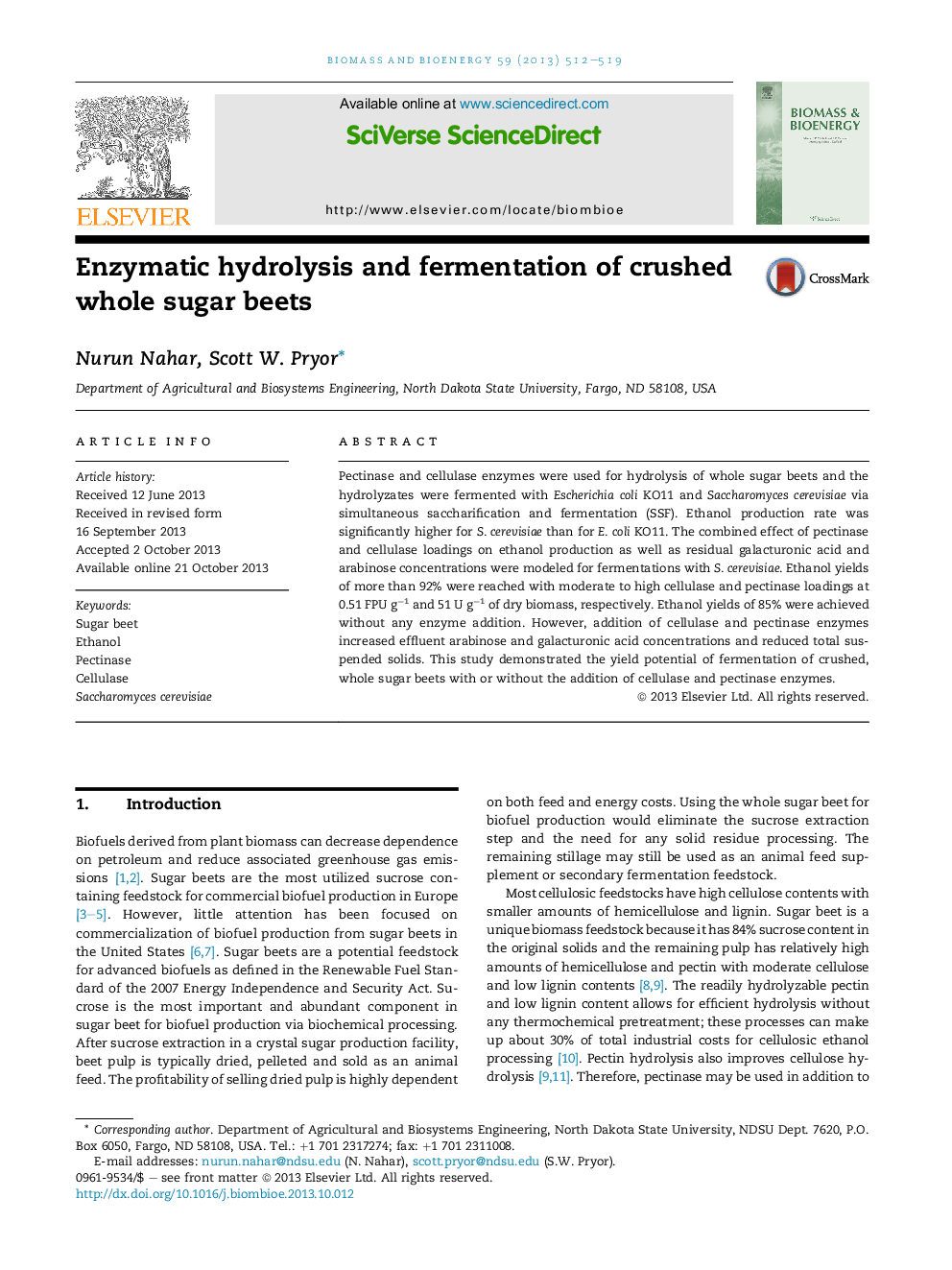| Article ID | Journal | Published Year | Pages | File Type |
|---|---|---|---|---|
| 677052 | Biomass and Bioenergy | 2013 | 8 Pages |
•Fermentation of whole sugar beets was modeled with and without enzyme addition.•85% ethanol yields were found without cellulase or pectinase supplementation.•Ethanol yields improved by 7% with addition of cellulase and pectinase.•Enzyme supplementation reduced total suspended solids in the filtrate by 63–74%.•Enzyme addition increased total non-fermentable sugar concentrations to 12 g L−1.
Pectinase and cellulase enzymes were used for hydrolysis of whole sugar beets and the hydrolyzates were fermented with Escherichia coli KO11 and Saccharomyces cerevisiae via simultaneous saccharification and fermentation (SSF). Ethanol production rate was significantly higher for S. cerevisiae than for E. coli KO11. The combined effect of pectinase and cellulase loadings on ethanol production as well as residual galacturonic acid and arabinose concentrations were modeled for fermentations with S. cerevisiae. Ethanol yields of more than 92% were reached with moderate to high cellulase and pectinase loadings at 0.51 FPU g−1 and 51 U g−1 of dry biomass, respectively. Ethanol yields of 85% were achieved without any enzyme addition. However, addition of cellulase and pectinase enzymes increased effluent arabinose and galacturonic acid concentrations and reduced total suspended solids. This study demonstrated the yield potential of fermentation of crushed, whole sugar beets with or without the addition of cellulase and pectinase enzymes.
